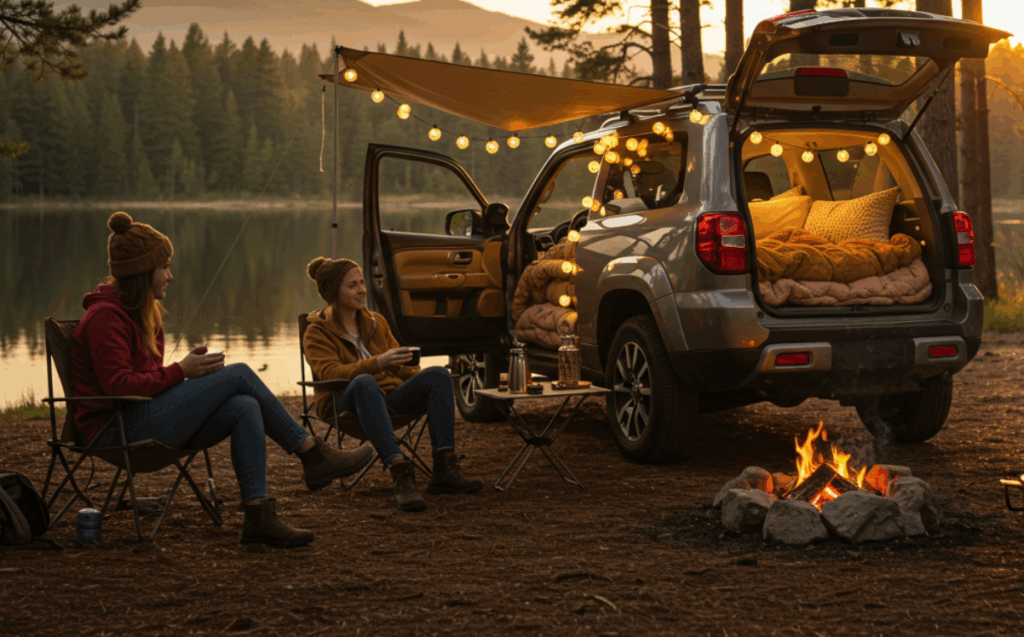Embarking on your first camping trip doesn’t have to break the bank. With the right strategies, you can enjoy the beauty of the outdoors, create lasting memories, and stay comfortable—all while keeping your spending in check. This guide is packed with practical tips, up-to-date advice, and actionable checklists to help you plan a successful and affordable camping experience from start to finish.
1. Why Budget Camping is the New Trend
Budget camping is gaining popularity as more people seek meaningful outdoor experiences without overspending. Affordable gear, online communities, and easy access to information have made it possible for anyone to enjoy nature comfortably and safely while keeping costs low.
- Accessible to all ages and backgrounds.
- Promotes sustainable travel and minimalism.
- Encourages creativity and resourcefulness.
2. How to Plan Your Camping Budget
Start by listing your must-have items and estimating costs for each category. Prioritize essentials, research average prices, and set aside a small buffer for unexpected expenses. Use the table below to help structure your budget and spot areas for savings.
| Category | Budget Range (USD) | Money-Saving Tip |
|---|---|---|
| Gear | $50–$200 | Buy used, borrow, or rent |
| Food | $20–$60 | Prepare meals at home |
| Transport | $10–$50 | Carpool or use public transit |
| Site Fees | $0–$40 | Choose free or low-cost sites |
| Activities | $0–$30 | Opt for free nature activities |
3. Affordable Gear Strategies for Beginners
- Start with the basics: tent, sleeping bag, mat, and a light source. Don’t buy everything at once—focus on what you truly need for your first trip.
- Look for budget-friendly brands and seasonal sales for discounts on new gear.
- Choose multipurpose items (e.g., a blanket that doubles as a picnic mat).
- Borrow or rent gear from friends or local outdoor clubs to test before you invest.
| Essential Gear | Budget Option | Typical Price |
|---|---|---|
| Tent | Entry-level dome tent | $30–$60 |
| Sleeping Bag | Synthetic, 3-season | $20–$40 |
| Mat | Foam pad | $10–$20 |
| Lantern/Light | LED headlamp | $8–$15 |
4. Navigating the Secondhand Market
The secondhand market is a goldmine for affordable, quality camping gear. Use trusted platforms, inspect items in person, and compare prices before buying. Check for wear, ask about the product’s history, and negotiate politely—many sellers expect it.
- Check seller ratings and reviews for safety.
- Meet in public places for exchanges.
- Look for seasonal deals when demand is lower.
5. Cost-Saving Hacks for Every Camper
- Share gear and food with friends to split costs.
- Plan meals in advance and prep at home to avoid expensive convenience foods.
- Choose free or low-fee campsites, such as public lands or community parks.
- Engage in free activities like hiking, swimming, or stargazing.
- Use digital checklists to avoid forgetting essentials and prevent last-minute purchases.
6. Quick FAQ: Budget Camping Essentials
- What’s the minimum gear I need? Tent, sleeping bag, mat, and a light source are the core essentials for a safe and comfortable trip.
- How can I find the best deals? Shop off-season, use price comparison tools, and join outdoor forums for tips on sales and secondhand finds.
- Is expensive gear necessary? Not for beginners—affordable options are often sufficient for casual trips.
- How do I keep my trip eco-friendly? Leave no trace, use reusable containers, and respect local wildlife and regulations.
Budget camping is about creativity, resourcefulness, and making the most of the great outdoors without overspending. With the right approach, your first trip can be both affordable and unforgettable.

